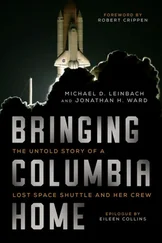
HarperElement
An Imprint of HarperCollins Publishers 1 London Bridge Street London SE1 9GF
www.thorsonselement.com

and HarperElement are trademarks of HarperCollins Publishers Ltd
First published in the US by Little, Brown and Company, Inc. 1991
This edition HarperElement 2006
© Torey Hayden 1991
Torey Hayden asserts the moral right to be identified as the author of this work
A catalogue record of this book is available from the British Library
All rights reserved under International and Pan-American Copyright Conventions. By payment of the required fees, you have been granted the nonexclusive, nontransferable right to access and read the text of this e-book on-screen. No part of this text may be reproduced, transmitted, downloaded, decompiled, reverse engineered, or stored in or introduced into any information storage and retrieval system, in any form or by any means, whether electronic or mechanical, now known or hereinafter invented, without the express written permission of HarperCollins e-books.
Source ISBN: 9780007218646
Ebook Edition © 2012 ISBN: 9780007370825
Version 2015-02-03
HarperCollinsPublishers has made every reasonable effort to ensure that any picture content and written content in this ebook has been included or removed in accordance with the contractual and technological constraints in operation at the time of publication.
The names of people in this book have been changed for reasons of privacy.
Cover
Title Page
Copyright
Dedication
Chapter One
Chapter Two
Chapter Three
Chapter Four
Chapter Five
Chapter Six
Chapter Seven
Chapter Eight
Chapter Nine
Chapter Ten
Chapter Eleven
Chapter Twelve
Chapter Thirteen
Chapter Fourteen
Chapter Fifteen
Chapter Sixteen
Chapter Seventeen
Chapter Eighteen
Chapter Nineteen
Chapter Twenty
Chapter Twenty-One
Chapter Twenty-Two
Chapter Twenty-Three
Chapter Twenty-Four
Chapter Twenty-Five
Chapter Twenty-Six
Chapter Twenty-Seven
Epilogue
Keep Reading
Exclusive sample chapter
Torey Hayden
About the Author
About the Publisher
There were 152 miles between the city and Falls River and from there another 23 miles to Pecking. All of it was prairie, wide flat, and open, interrupted only by the interstate. There were towns along the way, of course, although “town” was a rather grand description for most of them. The names, however, were always hopeful: Harmony, New Marseilles, Valhalla.
I’d alloted myself two and a half hours to cover the distance, setting off in the early morning darkness with an egg salad sandwhich and a thermos of coffee. Given no nasty surprises in the January weather, I anticipated reaching Pecking by eight.
For much of the way mine was the only car on the road. In and around Falls River there was the bustle of rush hour traffic, but otherwise, nothing disturbed the white emptiness of the plains for mile after mile. A faint breeze eddied powderlike snow across the highway, making the tracks of my tires disappear in a white sky. A litter of sundogs scampered in an arc around it. Passing through one small town, I peered down the main street. The time-and-temperature sign read −38°.
I was born and bred in the Montana Rockies, and my heart had remained in wide, wild places. Despite the enjoyable stimulation of city living, I found the confinement, the dirt, and especially the noise, oppressive. Consequently, what absorbed me most as I drove across the snow-covered prairie that January morning was not thoughts of the new life which lay ahead but rather a simple sense of unbridled freedom. I’d escaped from the city. I was alone with all that silent space around me, and the sense of deliverance it gave me verged on the ecstatic. I don’t believe I actually thought about where I was going at all.
Fact was, it probably wasn’t so much a case of not thinking as daring not to think. After nearly three years as a research coordinator and therapist at the Sandry Clinic, I’d thrown it all over in one wholly impulsive moment. Opening the Sunday newspaper one weekend before Christmas, I’d seen an advertisement for a special education teacher to fill a midyear vacancy in a class for the behaviorally disordered. A perfectly straightforward ad. Straightforward enough response, too. I saw it and I wanted it.
The strange part was that I hadn’t been looking for a new job at the time. I hadn’t even been thinking of looking. My time at the Sandry had been thoroughly enjoyable and professionally fulfilling. Staffed by seven psychiatrists and a handful of specialized psychologists like myself, the clinic was small, private, and pleasantly situated. I’d been taken on mainly for research expertise and for my experience in treating children with language-related psychological problems. In the years that followed, I’d often worked very hard and certainly there’d been a fair share of ups and downs, but the challenges had been worth it. I really did think I was happy there. Nothing available on a conscious level had clued me in to any desire to chuck the large, airy therapy room full of toys, the genial group of colleagues, and the stimulating research for another chance to gird my loins in denim and crawl around on some dusty classroom floor for the kind of money that would have paid traveling expenses at the clinic. But the Siren called and without a backward glance, I responded.
Like so many other little communities I’d passed through on my drive from the city, Pecking was in a state of sleepy decay. The wide, tree-lined streets testified to a time before the railroad had pulled out, before the interstate had passed it by, but now it stood, a wan ghost of small-town America, its A&W root beer stand still there but abandoned, its “Drink Coca-Cola” girl still gamely smiling from her faded mural on the side wall of the savings-and-loan building. The downtown district was virtually gone, all the big stores having moved to the shopping mall in Falls River. There was still a bank and a drugstore, a couple of cafés, a real estate agent, and a gas station on Main Street, and around the corner on First Street, a ranch store that sold saddles, boots, and hats, but there was no shopping district. What was available in Pecking had relocated far out on the southern fringe in an effort to tempt drivers from the interstate. A “shopping center” had been built there a few years before, and it consisted of a supermarket, another drugstore, and a parking lot so spacious it could no doubt have accommodated every car within five miles of Pecking and then some.
The school was on a side street two blocks over from Main. Built in 1898, it had once been the Pecking high school. The beautifully carved wooden plaque attesting to this status still hung above the door, although the word “High” had long since been puttied in. I didn’t know how many schools there must have been in Pecking during its heyday, but this was all that was left now. An enormous monstrosity built from local sandstone, it housed grades K to six and the only special education classroom in the district.
Читать дальше














